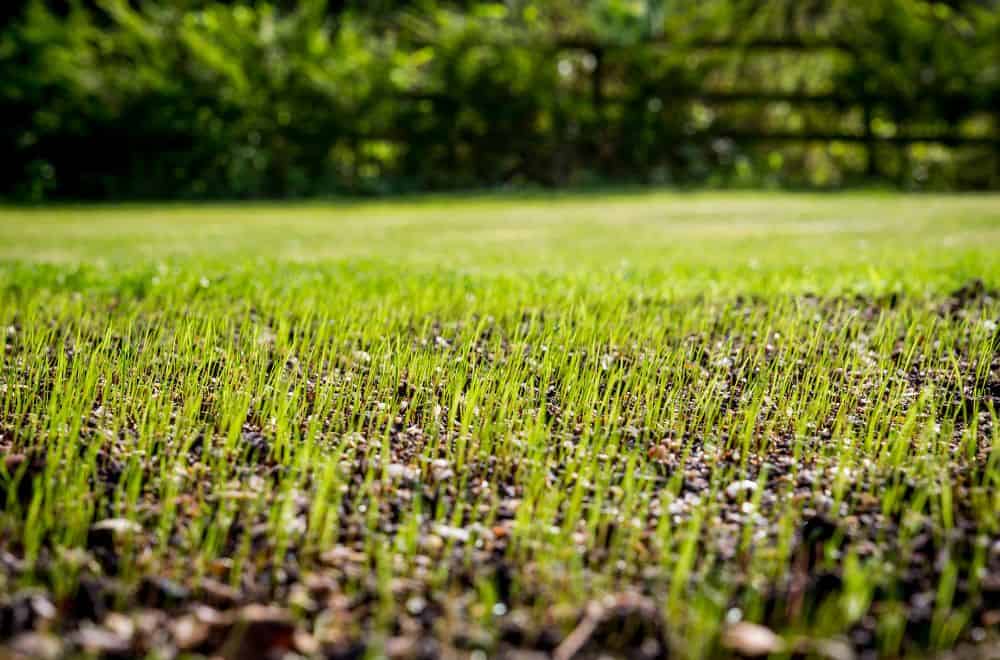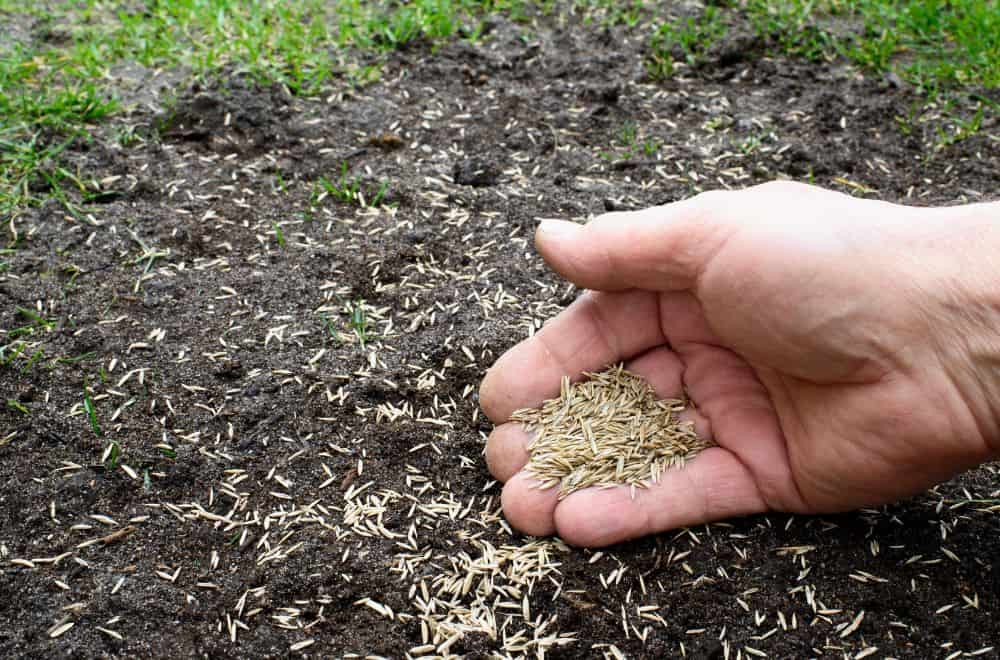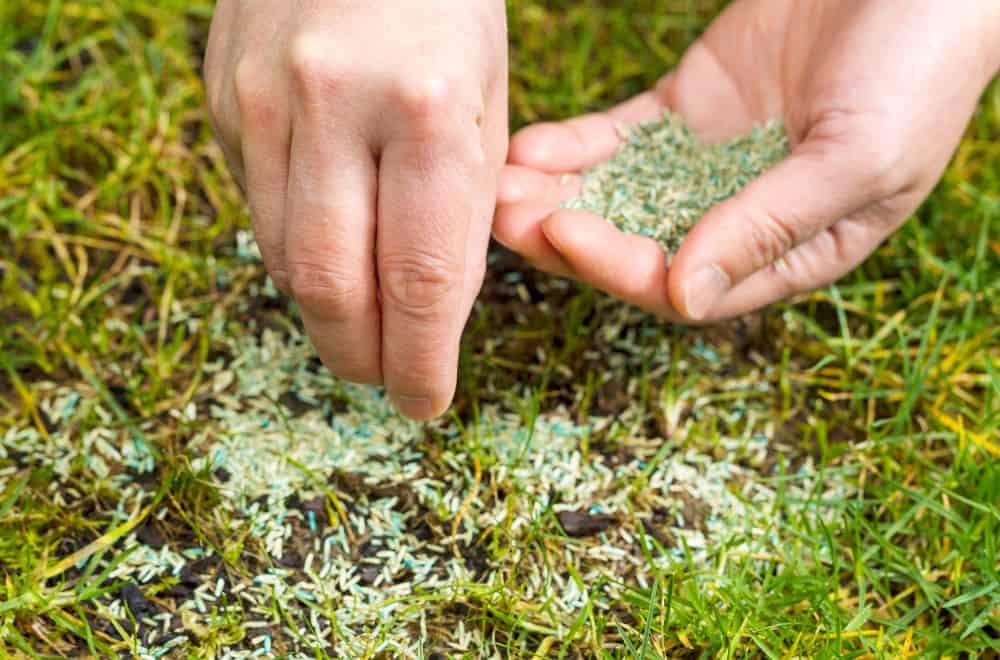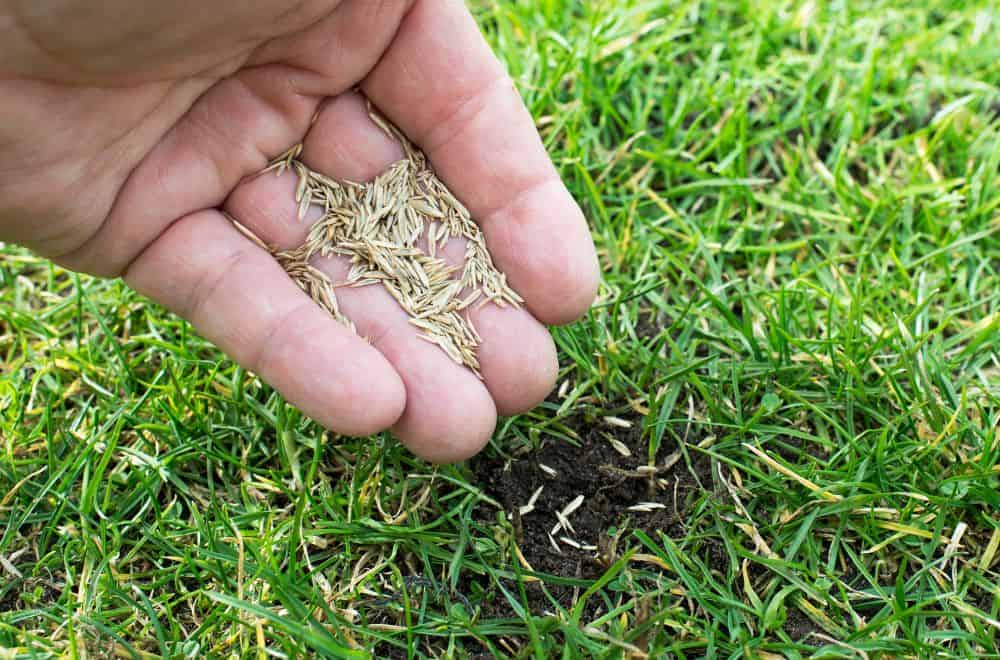Are you planning to start a new lawn? Or, maybe you want to overseed and improve the condition of your existing yard? When it comes to growing new seeds on a lawn, timing is everything. Timing in this context refers to the planting seasons.
Attempting to grow grass seeds in the wrong season can be a big waste of your expensive seeds. Improper temperature conditions can lead to slow germination, stunted growth, bald spots, weed infestations, and other lawn problems.
Knowing when to plant grass seed for optimal growth is a skill that often confuses even experienced lawn owners. Don’t worry, though. In this article, we’ll cover everything you need to know about grass seed germination temperature. In the end, you will be quite knowledgeable about the best seasons and conditions for growing your grass to create a beautiful lawn.
So, let’s get started!
How Does Temperature Affect Grass Growth?

If you want a green, healthy, and flourishing lawn, it is crucial to pay attention to the soil temperature. The temperature of the soil affects your lawn in several ways:
- Germination: Seeds need the right amount of moisture and warmth to grow into whole, healthy plants. If the moisture or warmth is too low or too high, the grass seed may stay dormant or experience stunted growth.
- Disease: Moisture and warmth are the cause of many fungal diseases affecting lawns. Your lawn already has natural fungi, but too much or too little moisture or heat can trigger the fungi to flourish.
- Growth: In addition to helping with germination, the soil temperature also affects how well the grass in your lawn grows. Warm soil boosts faster growth, resulting in thicker and lusher grass.
Now, you know the impact that ground temperature has on the growth of your grass seeds. Next, let’s take a look at another factor that goes hand in hand with grass seed germination and the prevailing soil temperatures: the type of grass.
Grass Seed Growth: Climate, Temperature, and Grass Types

Not all grass seeds are the same. You might have the best quality seeds, but if they are incompatible with the climate and your region’s soil temperature, the seeds will stay dormant, die off, or altogether not flourish into healthy grass plants.
To ensure optimal germination, you should pair your grass seeds with the climate and ground temperatures at any given time.
While there are many different grass types, they can all be categorized into warm-season and cool-season grasses. Warm-season grasses will thrive in warmer soils and go dormant when the ground temperatures cool. On the other hand, cool-season grasses will grow fast where the soil temperature is cool.
In a bit, we’ll take a look at the exact soil temperatures to keep an eye on when growing warm and cool-season grass. For now, the most important thing to understand is that different grass seeds require different temperature conditions to germinate into healthy and green grass. While you obviously cannot change soil temperature, you can plan when to grow your seeds for optimal growth.
Best Time To Grow Cool-Season Grass
Cool-season grasses such as tall fescue, perennial ryegrass, and Kentucky bluegrass are best suited for areas with cooler temperatures. These grasses will grow their fastest and their tallest toward the end of summer and the start of fall.
So, with this in mind, when is the best time to grow cool-season grass? The best time to seed your lawn with cool-season grass is in early fall. At this time, the soil is still warm from the summer heat. Also, in fall, the days are warm and evenings cool. This offers the perfect environment for the grass seeds to germinate fast.
The optimal soil temperatures for cool-season grass are between 50 and 60 degrees Fahrenheit. You can buy a simple thermometer from your local garden store to check the soil temperatures on your own. This way, you can be absolutely sure that the ground temperatures are suitable for planting your grass seeds. Learn a few tips on checking the soil temperature in your lawn.
Although early autumn is the most suitable time to grow cool-season grass, this might vary slightly depending on where you live. For example, if you reside in the north or central Arkansas, you would be looking at September to October as the ideal period for planting your cool-season grass seeds. For lawn owners in the Upper Midwest, the best time for seeding would be between August and September.
Generally, it is advisable to seed your lawn 45 days before the day that your area expects the first frost of the fall season. After this period, the ground and air temperatures will fall, making the conditions unfavorable for germination. Consult with your local county extension agent if you aren’t sure about your area’s frost dates.
Another reason why fall is the ideal time to grow cool-season grass is the availability of adequate moisture. In addition to warmth and air, seeds need water to germinate. The presence of autumn rains ensures that the cool-season grass seeds do not dry out. Instead, the seeds have an entire season to sprout and flourish into a plushy lawn.
If you cannot make it to seed your lawn in the fall for some reason, you can do so in spring. However, we strongly recommend waiting until mid or late spring when the early spring rains and winter snow give way to warm days and cool nights. In mid and late spring, the soil is also warmer, which is ideal for seed germination.
If you were wondering when the best time is to seed cold-season grass, now you know. Early fall or mid to late spring is your best bet. Let us move on to warm-season grass to find out the ideal grass seed germination temperatures for these types of grasses.
Best Time to Grow Warm-Season Grass

As the name suggests, warm-season grass such as St. Augustine, Zoysia, and Bermuda germinate well in warm climates when soil temperatures are between 65 and 70 degrees Fahrenheit. Late spring and early summer, when the soil is adequately warm and the early showers are pouring, is an excellent time to grow your warm-season grass.
That said, the best time to seed your lawn with warm-season grass will depend on where you live. For example, if you live in the Midwest region, late May to June is a good time to grow your warm-season grass seed. Meanwhile, if you are located in California, the best time to seed your lawn with warm-season grass is in the period between mid-April and mid-May.
One mistake new lawn owners make is rushing to seed the lawn as soon as spring arrives. However, they end up being disappointed by the early spring frost, which makes the soil too wet and too cold to support the germination of warm-season grass seeds. Cold and excessive moisture are the perfect conditions for lawn fungal disease and stunted grass growth.
To be on the safe side, you are better off waiting for at least 90 days before the first frost of autumn comes and right before winter. Once late fall and then winter comes around, your warm-season grass will go dormant until late spring and early summer. As such, it is crucial to seed early so that the seeds will have an entire season of summer warmth to germinate and flourish before the cold season comes around.
Overseeding Your Lawn
Overseeding can help to repair your existing lawn, fill up bare spots with new grass, and keep your lawn green all year round regardless of the climate. But, the rules on the best time to grow your grass seeds change a bit when it comes to overseeding.
We’ve said that late spring is the ideal time to seed your lawn with warm-season grass, which flourishes in summer. However, come late fall and winter, your summer lawn will dry up and go dormant. If instead, you want a green lawn, even in the colder months, you can grow cool-season grass to last you through the winter.
If you want to overseed your lawn with cold-season grass seed, you should do it in the fall when your warm-season lawn begins to lose its color and go dormant.
Summary
Whether you are starting a new lawn or repairing an existing one, patience will pay. It is best to wait for the right season to plant your grass seeds. This way, the ground temperature will be just right to support your specific grass type.
After planting your seeds, you must practice good lawn management. Follow the instructions on how to water your lawn, feed the soil, and get rid of weeds, and you will be well on your way to a lawn that is the envy of your neighborhood.

Leave a comment